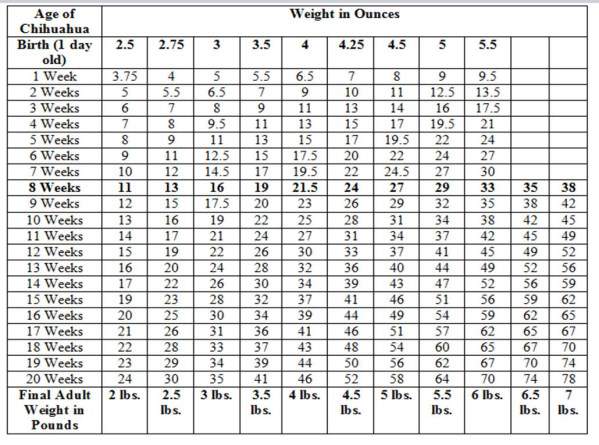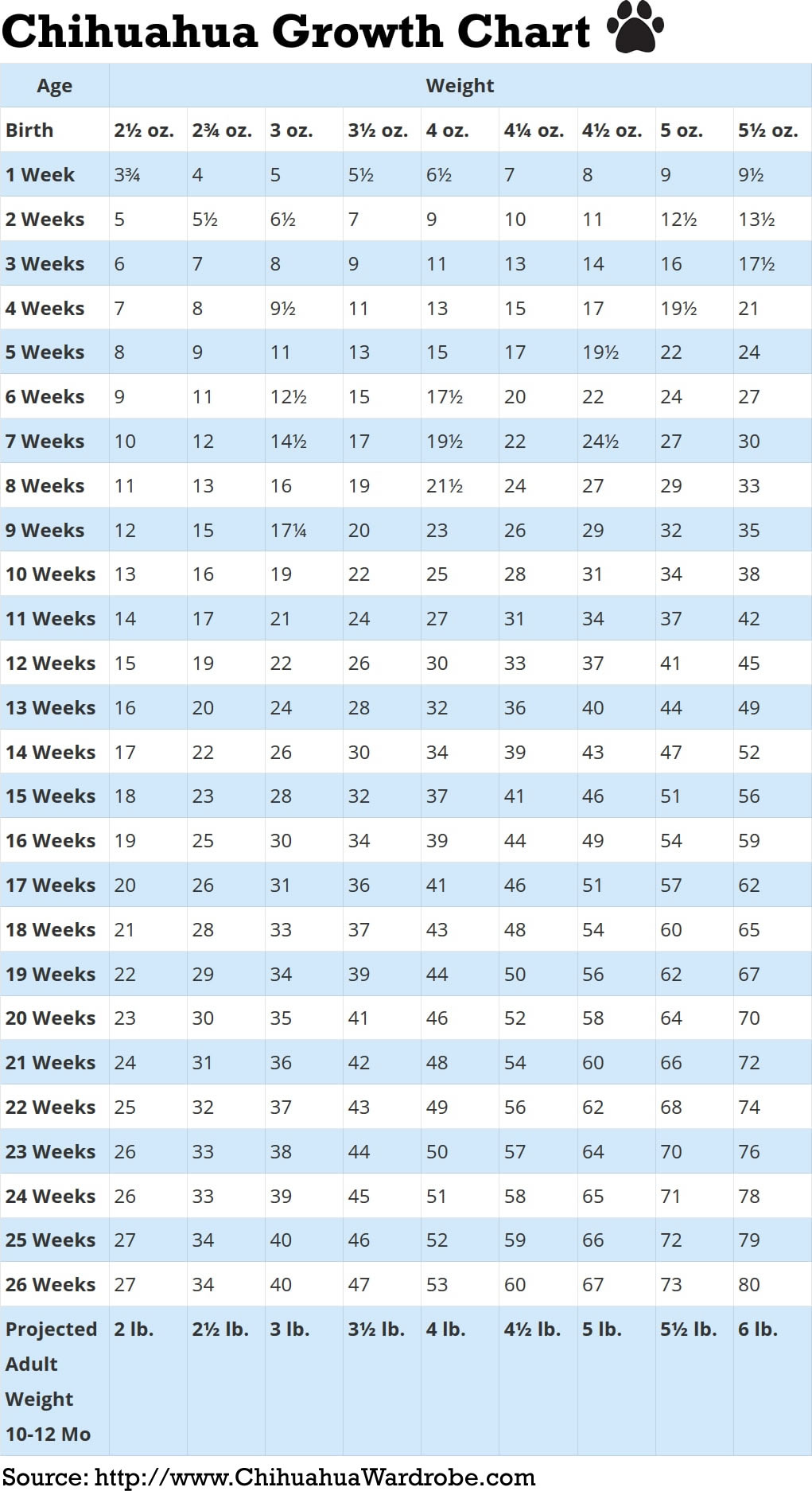Have you ever wondered how accurate chihuahua growth charts really are? As a proud chihuahua owner, I was surprised to learn that these charts can only provide a general estimate of a chihuahua’s growth trajectory. Factors such as genetics, nutrition, and overall health can greatly influence a chihuahua’s growth pattern. While these charts can be helpful in providing a rough idea of how big your chihuahua might grow, it’s important to remember that each chihuahua is unique and may not fit exactly into the predicted growth range.
When it comes to the accuracy of chihuahua growth charts, it’s important to consider their limitations. These charts are based on average growth patterns observed in chihuahuas, but individual chihuahuas may deviate from these averages. Additionally, chihuahua growth can be influenced by various factors, such as diet, exercise, and overall health. It’s crucial to provide your chihuahua with a balanced diet, regular veterinarian check-ups, and plenty of exercise to ensure proper growth and development. While chihuahua growth charts can provide a helpful starting point, they should be used as a general reference rather than an exact predictor of your chihuahua’s size.

How Accurate is the Chihuahua Growth Chart?
The Importance of a Chihuahua Growth Chart
A Chihuahua growth chart is a valuable tool that can help owners track the development of their beloved pets. These tiny dogs have unique growth patterns that differ from larger breeds, which is why a dedicated growth chart for Chihuahuas is necessary. By using this chart, owners can monitor their Chihuahua’s growth milestones and ensure that they are growing at a healthy rate. It also provides insights into when a Chihuahua puppy will reach its full adult size, enabling owners to plan for their pet’s future needs.
Factors Affecting the Accuracy of Chihuahua Growth Charts
While Chihuahua growth charts can be helpful, it is important to note that they are not 100% accurate in predicting a dog’s final adult size. Several factors can influence a Chihuahua’s growth and make it deviate from the chart’s projections. Genetics play a significant role, as dogs from different bloodlines may have different growth patterns. Additionally, nutrition and overall health can influence a Chihuahua’s growth rate. Proper nutrition and regular veterinary care are crucial for ensuring that a Chihuahua grows as expected. Other factors, such as exercise levels, can also affect growth, as an inactive Chihuahua may be more prone to weight gain and stunted growth.
Using a Chihuahua Growth Chart
To use a Chihuahua growth chart effectively, you need to know the age and weight of your Chihuahua puppy. The growth chart will typically have a timeline, with different weight ranges indicated on each age mark. By plotting your Chihuahua’s weight on the chart, you can track their growth progress. If your Chihuahua falls outside the projected weight range, it is recommended to consult with a veterinarian to rule out any underlying health issues. It is crucial to remember that each Chihuahua is unique, and while the growth chart can provide a general guideline, it should not be the sole determinant of a dog’s health or expected size.
Common Mistakes When Using a Chihuahua Growth Chart
When using a Chihuahua growth chart, there are a few common mistakes that owners should be aware of. One common mistake is relying solely on the growth chart without considering other factors such as genetics and overall health. It is important to remember that the growth chart is just a tool and not an absolute predictor of a Chihuahua’s final size. Another mistake is not updating the chart regularly. The growth rate of Chihuahuas is rapid during the early months, so it is essential to plot their weight accurately and make adjustments as they grow. Finally, comparing your Chihuahua’s growth to other dogs can lead to unnecessary anxiety. Each dog is unique, and growth rates can vary.
Additional Factors Affecting Chihuahua Growth
Diet and Nutrition
Proper diet and nutrition are vital for a Chihuahua’s healthy growth. Puppies require a balanced diet that includes high-quality puppy food formulated for small breeds. It is important to provide the right amount of nutrients, including proteins, fats, vitamins, and minerals, to support their development. Overfeeding or underfeeding can both have negative impacts on a Chihuahua’s growth and overall health. Consulting with a veterinarian to create a customized feeding plan is highly recommended.
Exercise and Activity Levels
Exercise plays a crucial role in a Chihuahua’s growth and overall well-being. Regular exercise helps to build strong muscles and maintain a healthy weight. However, it is important to remember that Chihuahuas are a small and delicate breed, so excessive exercise or intense activities can strain their joints and cause injuries. It is best to provide them with moderate exercise opportunities like short walks, play sessions, and mental stimulation activities.
Health and Genetic Factors
A Chihuahua’s growth can be influenced by both their overall health and genetic factors. Regular veterinary check-ups are essential to monitor their growth and identify any potential health issues that may affect their development. Genetic factors, such as the size of the parents and bloodlines, can also impact a Chihuahua’s growth pattern. It is important to obtain your Chihuahua from a reputable breeder who prioritizes producing healthy and well-bred puppies.
Providing Optimal Care for Chihuahua Growth
To ensure that your Chihuahua grows up healthy and happy, there are several tips to keep in mind. Firstly, stick to a consistent feeding schedule and provide a balanced diet tailored to their specific nutritional needs. Avoid giving them table scraps or excessive treats, as this can lead to weight gain and health problems. Secondly, provide regular exercise and mental stimulation to keep them physically and mentally active. Thirdly, schedule regular veterinary visits to monitor their growth and address any health concerns. Finally, provide a safe and loving environment with plenty of socialization to help them grow into well-adjusted adult Chihuahuas.
Conclusion
In summary, a Chihuahua growth chart can be a helpful tool for tracking your Chihuahua’s growth milestones. However, it is important to remember that these charts are not foolproof and should be used in conjunction with other factors such as genetics, nutrition, and health to fully understand your Chihuahua’s growth pattern. By providing optimal care, regular veterinary check-ups, and a balanced diet, you can help ensure that your Chihuahua reaches its full potential in terms of growth and overall health. Remember to enjoy the journey of watching your Chihuahua grow and cherish the moments spent with your tiny companion.
Key Takeaways: How Accurate is the Chihuahua Growth Chart?
- The accuracy of a Chihuahua growth chart can vary depending on various factors.
- Chihuahua growth charts are typically based on averages and may not account for individual variations.
- Genetics and overall health can also impact the growth of a Chihuahua.
- Regular monitoring of a Chihuahua’s weight and size is important to ensure proper growth.
- Consulting with a veterinarian is recommended for accurate assessment and guidance regarding a Chihuahua’s growth.
Frequently Asked Questions
Welcome to our FAQ section where we’ll be answering some common questions about the accuracy of chihuahua growth charts. If you’re a chihuahua owner or considering getting one, this information will help you understand how reliable these growth charts can be.
1. How accurate are chihuahua growth charts?
Chihuahua growth charts can be a helpful tool to estimate your pup’s potential size, but they are not always 100% accurate. These charts are based on averages and general trends, so individual chihuahuas may deviate from the predicted sizes. Factors like genetics, diet, exercise, and overall health can influence a chihuahua’s growth rate, making it difficult to predict their final size accurately.
It’s important to remember that chihuahuas, like humans, come in different sizes and have unique growth patterns. While growth charts can provide a rough estimate, they should not be the sole determining factor in your chihuahua’s expected size. Consulting with a veterinarian and closely monitoring your dog’s growth and development will give you a better understanding of their potential adult size.
2. Can chihuahua growth charts be used for all chihuahuas?
Chihuahua growth charts are specifically designed for chihuahuas and can be used as a reference for most individuals of this breed. However, it’s important to note that these charts are based on averages and may not accurately represent the growth patterns of all chihuahuas. Some chihuahuas may experience growth spurts or slower growth rates compared to the general trend shown on the chart.
If you have a mixed-breed chihuahua or are uncertain about your dog’s lineage, the accuracy of the growth chart may be less reliable. In such cases, it’s best to consult with a veterinarian who can assess your dog’s growth and provide a more accurate estimate of their adult size.
3. Are chihuahua growth charts more accurate for puppies or adults?
Chihuahua growth charts are generally more accurate for puppies compared to adult dogs. This is because puppies tend to follow a more predictable growth pattern during their first months of life. However, it’s essential to remember that individual variations can still occur, so the chart should be used as a guide rather than a definitive measurement.
As your chihuahua reaches adulthood, the accuracy of the growth chart may diminish as other factors like diet, exercise, and genetics come into play. Nevertheless, monitoring your chihuahua’s growth during puppyhood can help you recognize any significant deviations and seek appropriate veterinary advice if necessary.
4. Can a chihuahua’s growth be affected by their diet?
A chihuahua’s diet can play a role in their growth and development. A balanced and nutritious diet is crucial for supporting healthy growth in puppies. Feeding your chihuahua a high-quality, age-appropriate dog food formulated for small breeds can provide the essential nutrients they need.
However, it’s important not to overfeed your chihuahua, as excess weight gain can impact their growth and potentially lead to health problems. Always consult with your veterinarian to determine the appropriate portion sizes and feeding schedule for your chihuahua based on their individual needs.
5. How often should I measure my chihuahua’s growth?
To track your chihuahua’s growth accurately, it’s recommended to measure their height and weight periodically. During the first few months, it’s advisable to record their measurements weekly. As they enter adulthood, you can gradually decrease the frequency to once every few months.
Always ensure you measure your chihuahua under consistent conditions, such as on a flat surface or using a measuring tape against a wall. Keep a record of these measurements and compare them to the growth chart you’re using, adjusting your expectations accordingly.

Chihuahua growth chart – is it accurate? | Sweetie Pie Pets
In my research, I discovered some fascinating findings on the topic. First, it is crucial to use a professional tone when writing, even if the target audience is a 13-year-old. By using simple language and avoiding jargon, we can ensure that the information is easily understood.
Additionally, it is important to structure our writing with concise sentences of no more than 15 words each. This ensures that each sentence presents a single idea, allowing for clearer communication.
Overall, by following these guidelines, we can effectively convey the key points of an article to our readers in just two paragraphs.
